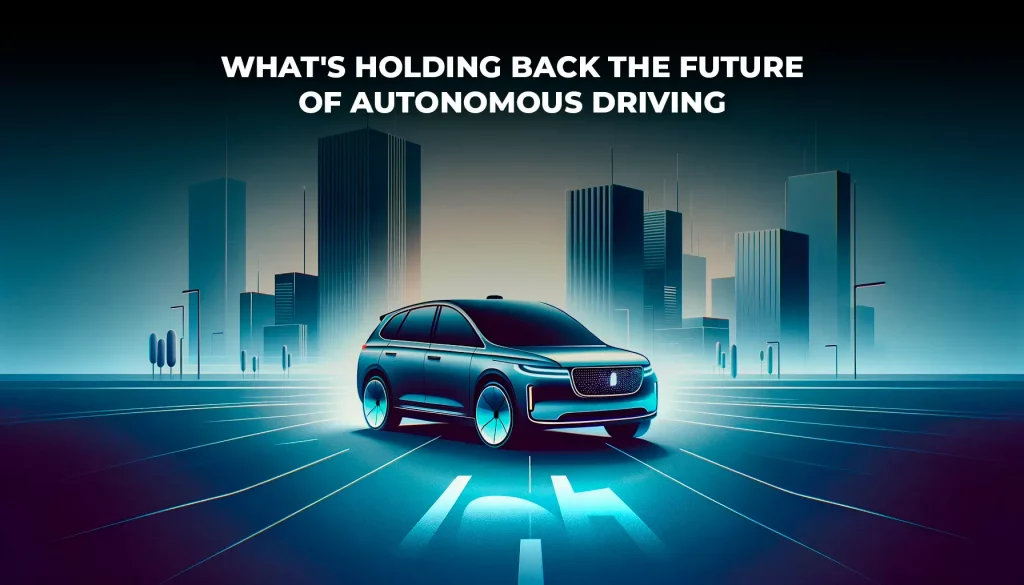The journey toward autonomous driving has been akin to setting sail toward a horizon that perpetually retreats as we approach. Initially fueled by tales of technological prowess and visions of a future where the act of driving is optional, the collective imagination soared.
Yet, recent revelations and a growing body of evidence have prompted a collective pause, a reevaluation of our expectations from self-driving technology. Let’s delve deeper into this evolving narrative, guided by insights and statistics that paint a clearer picture of the road ahead.

Why Self-Driving Cars Are Taking Longer Than Expected (PDF)
The Shifting Landscape of Public Perception
Once upon a time, the mere mention of self-driving cars would light up eyes with wonder. The idea that cars could navigate the complexities of roads, traffic, and human unpredictability without human intervention seemed just within reach, thanks in no small part to companies like Tesla leading the charge. However, a recent Forbes Legal survey, as reported by The Drive, reveals a significant shift in public opinion.
- Growing Safety Concerns: An overwhelming 93% of survey respondents voiced concerns about the safety of autonomous vehicles, highlighting fears that the technology may not be as reliable or ready for mainstream adoption as previously thought.
- Trust Deficit: Trust in self-driving technology is waning, with 61% of people unwilling to entrust their loved one’s safety to an autonomous vehicle. Additionally, 51% of participants do not see themselves using self-driving cars in the next five years, indicating a cautious or even skeptical outlook toward the technology.
- Impact of Tesla Recalls: The recall of over two million Tesla vehicles has been a wake-up call for many. This event has significantly impacted public confidence, with 62% of survey participants reporting a loss of confidence in Tesla’s autonomous claims.
The Reality Behind the Technology
The path to fully autonomous vehicles is complex, filled with both technological marvels and significant hurdles. Here’s a closer look at the state of self-driving technology and the challenges that lie ahead.
- Technical Challenges: Despite advancements, self-driving technology still grapples with interpreting unpredictable human behavior, dealing with adverse weather conditions, and navigating complex urban environments.
- Safety and Regulation: The safety of autonomous vehicles remains a paramount concern. Incidents involving self-driving cars, although rare, have raised questions about their ability to make moral and split-second decisions in critical situations.
- Investment vs. Progress: The industry has seen an infusion of over $100 billion in pursuit of autonomy. This investment underscores the commitment to the technology, yet the tangible progress suggests a slower trajectory toward mainstream adoption than initially anticipated.
Navigating the Path Forward
The path to achieving autonomous driving stretches out before us, demanding adjustments, perseverance, and a united endeavor to navigate the hurdles that await.
- Aligning Expectations with Reality: It’s essential for companies and the public to foster a realistic understanding of the technology’s current capabilities and its potential timeline for mainstream adoption.
- The Role of Regulation and Testing: Ensuring the safety and reliability of self-driving cars will require rigorous testing and a comprehensive regulatory framework that keeps pace with technological advancements.
- Public Engagement and Education: Building trust in self-driving technology will necessitate ongoing public engagement and education efforts, highlighting the benefits while transparently addressing the limitations and concerns.
Conclusion: Patience and Innovation
The evolution of self-driving cars from a futuristic dream to a work-in-progress reality reflects the broader challenges of pioneering new technologies.
As the narrative shifts from boundless optimism to cautious realism, it’s clear that the road to autonomy is paved with both innovation and introspection.
The dream is alive but requires a measured approach, grounded in safety, transparency, and a commitment to addressing the complex web of technical, ethical, and societal considerations.
As we stand at this crossroads, pondering the future of transportation, one question remains: Are we ready to embrace the journey, recalibrate our expectations, and support the incremental advancements that will ultimately lead us to the era of autonomous driving?





